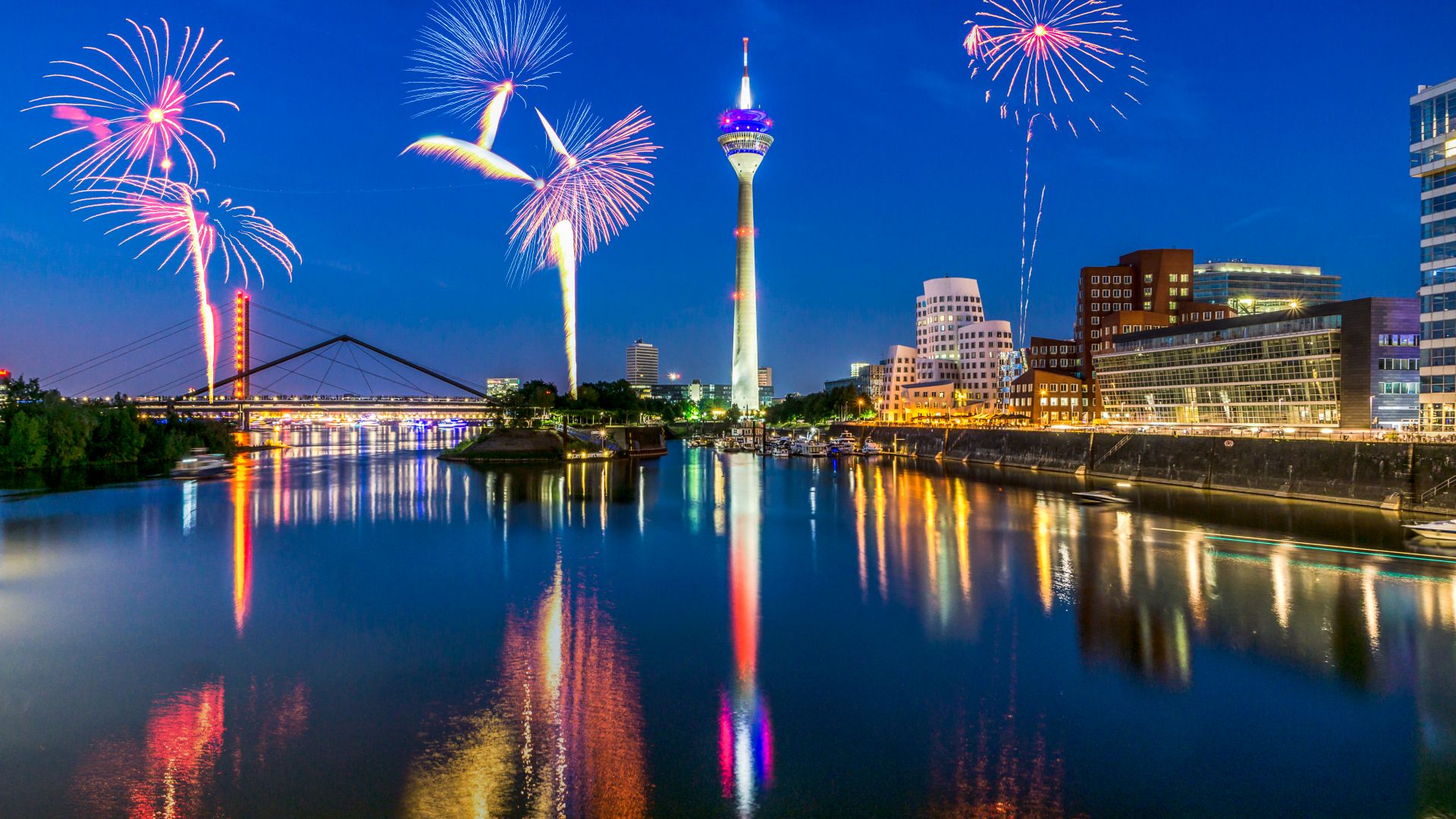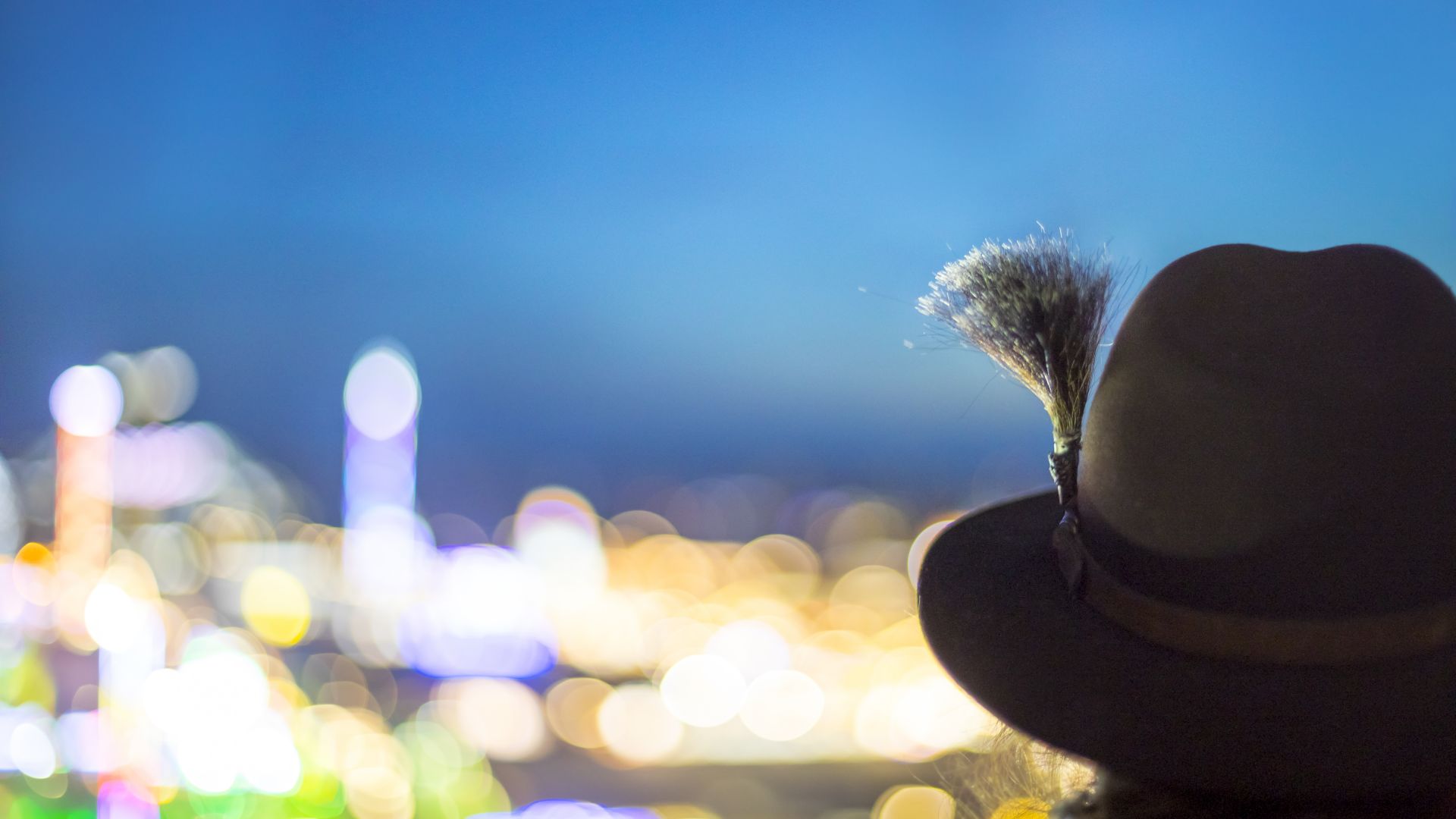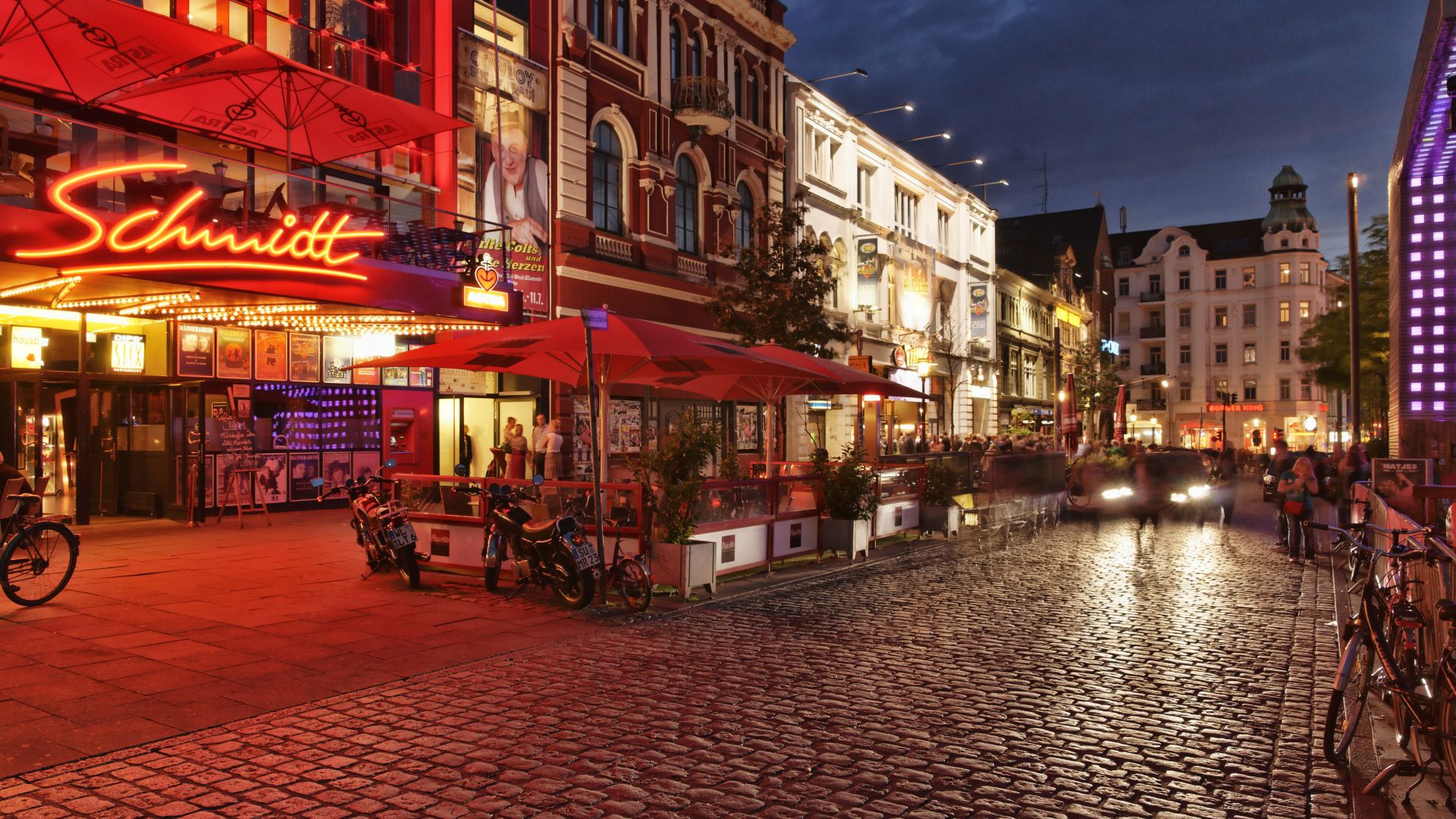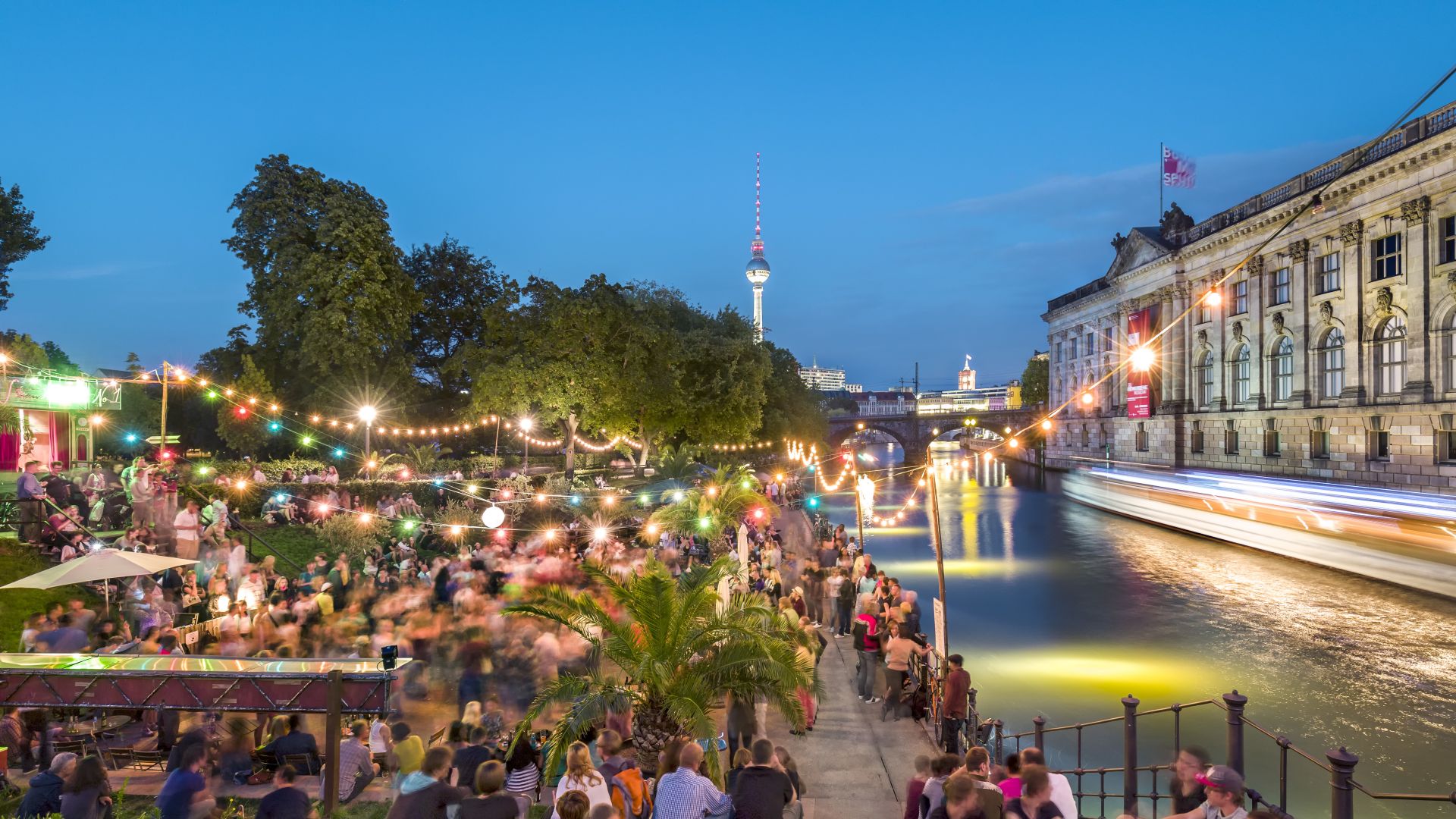Cities & Culture
Nightlife cities: paradise for night owls
In some cities – or at least neighbourhoods – things really get going as the sun goes down. In the streets and, even more so, the bars and clubs, punk starts to play. And techno. And jazz, rock, blues and much more. The main thing: these cities don't sleep!
Düsseldorf: just Altbier, or what?
 Düsseldorf: Fireworks over the Rhine, in the background the Media Harbour with Rhine Tower and New Customs Yard by Frank O`Gehry
©Getty Images (Daniel Keuck)
Düsseldorf: Fireworks over the Rhine, in the background the Media Harbour with Rhine Tower and New Customs Yard by Frank O`Gehry
©Getty Images (Daniel Keuck)
The phrase "längste Theke der Welt" (longest bar in the world) first appeared in a carnival hit and was probably definitively established as a phrase in a cover version by local punk heroes, "Die Toten Hosen". In any case, everyone knows what is meant by the phrase: Düsseldorf Old Town, with its 300 or so pubs, discos, restaurants and breweries. But inexperienced outsiders such as trade fair visitors, art dealers, fashion designers (the Rhine metropolis is Germany's number one fashion city) should watch out: in the breweries, unless you cover your empty glass with a beer mat, you'll often be served the next one without being asked. A clever move, but one that could have consequences for the following day. Which would be a shame, because North Rhine-Westphalia's capital also has a lot to offer during the daytime. Three examples: 1. The modern Media Harbour, including the new customs yard by star architect, Frank Gehry. 2. The 240-metre-high Rhine Tower with its revolving restaurant. And 3. the Königsallee, or Kö for short, which at 87 metres is not only Germany's widest street but also one of Europe's leading luxury shopping streets. Another decent shopping street, even with a hangover, is the Rhine enbankment promenade – without any bling-bling.
Munich: more than just Oktoberfest
 München: Mann mit Gamsbart schaut auf Oktoberfest
©Getty Images (Westend61)
München: Mann mit Gamsbart schaut auf Oktoberfest
©Getty Images (Westend61)
Munich and partying: many people's minds go straight to the former bohemian district of Schwabing, which remains popular among night owls, or to the Oktoberfest. At the "Wiesn", AKA Oktoberfest, the world's largest folk festival, beer flows down the throats of over six million visitors every year. And when these two extraordinary weeks are over? When the weather no longer suits chilling by the renaturalised Isar river and in beer gardens large and small, for which the Bavarian capital is famous? That's when the party-goers are drawn inside even more. The colourful Glockenbachviertel, the club mile between Maximiliansplatz and Sendlinger Tor, as well as the Werksviertel, the lively and exciting successor to the legendary "Kultfabrik", even if it is much less busy at night, promise a hotspot for bar and club energy. By the way, if you happen to see a steamship on a bridge during your city tour, you haven't just had one too many: the "Alte Utting" with its open-air grounds, the "Bahnwärter Thiel" bar made of train carriages, and the new Volkstheater, inaugurated in 2021, form a cool new nightlife area.
Hamburg: great freedom, great variety
 Hamburg: Reeperbahn bei Nacht
©Lookphotos (Ulf Böttcher)
Hamburg: Reeperbahn bei Nacht
©Lookphotos (Ulf Böttcher)
Fondly referred to as the "most sinful mile in the world", the Reeperbahn is strictly speaking not a mile at all. Nevertheless, visitors should allow several hours, or even nights, for the 950 metres between Nobistor and Millerntor. Rarely have so many discos, theatres, bars, fast-food stalls, nightclubs and, yes, dubious red-light establishments, especially in Herbertstraße, been concentrated in such a small area. Hotspots around Beatles-Platz and Große Freiheit can also be visited by "normal" guests, proven not least by the many nightly city tours to infamous clubs, table dance bars or neighbourhood pubs. Nightlife in this Elbe metropolis can also be quite different, whether in the trendy Schanzenviertel the Portugiesenviertel at Landungsbrücken, or in one of the many musical theatres.
Berlin: there's always something going on
 Berlin: Beach bar at the Bodemuseum_leitmotif German Summer Cities
©Lookphotos (Sabine Lubenow)
Berlin: Beach bar at the Bodemuseum_leitmotif German Summer Cities
©Lookphotos (Sabine Lubenow)
Three aspects in particular ensured that Berlin was labelled the second best party city in the CNN rankings a few years ago, above even New York and London. 1. Venues' extremely long opening hours, i.e. virtually around the clock. 2. Very unusual places like RAW-Friedrichshain, where you can find subcultures of all kinds. And 3. A disproportionately high amount of music, and good music at that, be it in the form of renowned band performances or internationally successful DJs who really heat things up in Berlin's around 200 clubs. They are particularly concentrated around the Spree, in Mitte, Kreuzberg and Friedrichshain. And between these three districts there are countless theatres, large and small, musical stages, karaoke shops, and more than 500 bars.